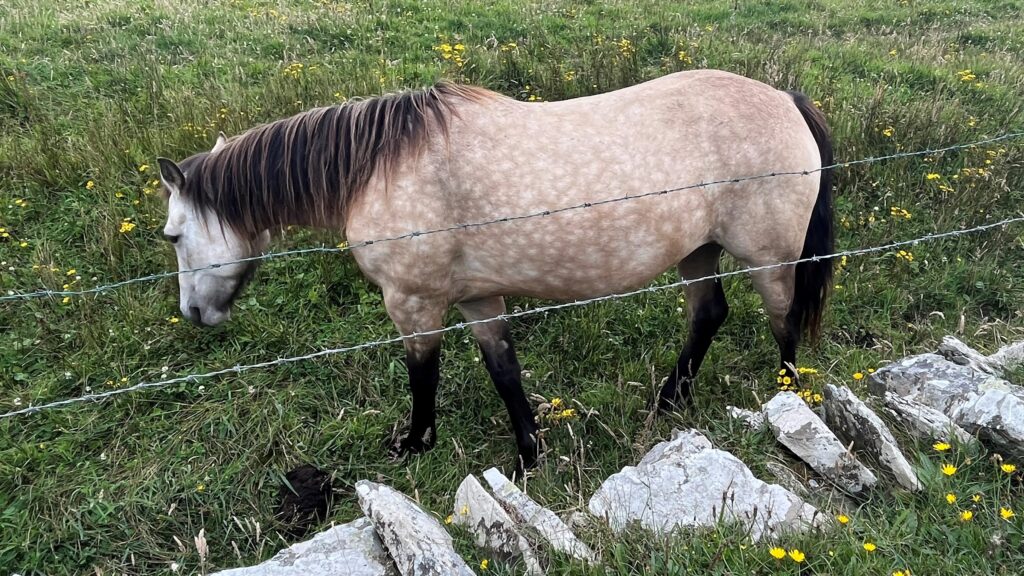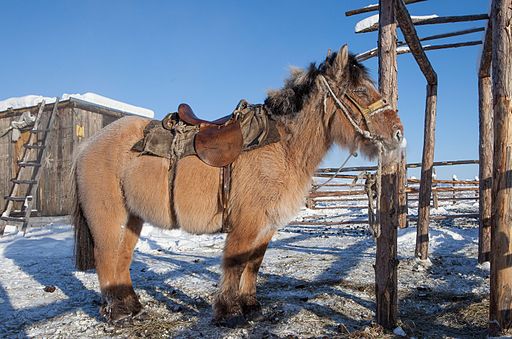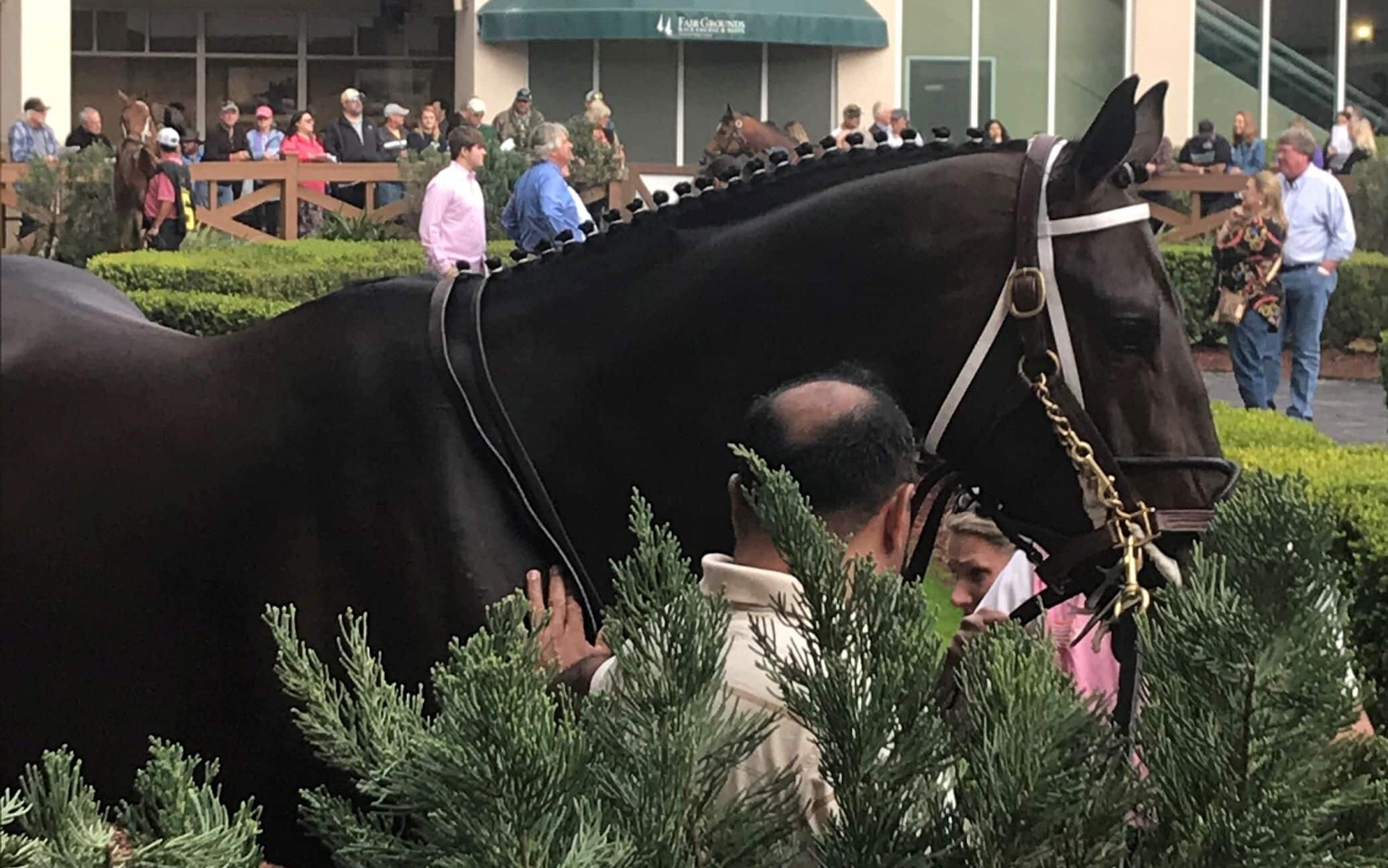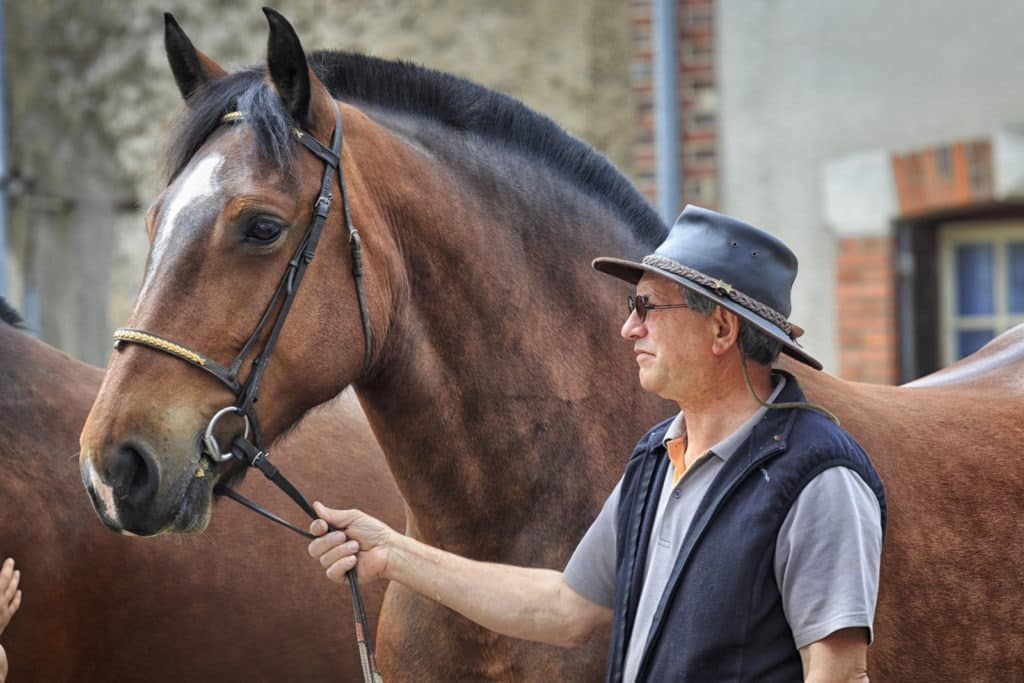Last updated: February 16, 2023
My grandfather kept all our horse’s manes trimmed short year-round. I never asked why they were always cut, but looking back, it makes me wonder why horses have manes in the first place.
Horses have manes to provide shade on hot sunny days and insulate their neck on cold days, and it acts as a natural fly screen. Manes also offer a layer of protection from predators’ teeth, and long forelocks shade the horse’s eyes from the sun and flies.
Most people think horse manes are for aesthetics, but it has a purpose. Its usefulness may not be as relevant today as it was, but it still serves some purposes.
Why horses have manes.
Horses are interesting animals; they’ve survived thousands of years as prey with one major defensive mechanism, speed. However, their mane did help them to survive harsh climates and attack predators.

The mane protects the horse’s neck from the predator’s bites.
The mane is the distinctive ridge of hair that grows on the top of a horse’s neck. It typically runs from the top of the horse’s head (poll) to its withers. The forelock is similar to the bangs on humans and falls forward over the front of a horse’s head.
In the early stages of their evolution, horses didn’t have long manes. However, over time, their hair evolved into a protective layer that helped defend against natural predators such as mountain lions or bites from other horses during fights.
Internal fighting between horses is likely why stallions have thicker hair on their necks than mares of the same breed. Scientists believe that this was a significant adaptation that helped horses survive and thrive in their natural environments.

Horse manes provide a layer of warmth.
Horse manes not only add to the animal’s aesthetic appeal, but they also serve an important purpose by providing a layer of warmth. In cold weather, a horse’s mane can help protect its neck from the elements.
The thick hair can trap warm air against the skin, providing a layer of insulation that can help keep the animal warm. This is especially important for horses that live in areas with cold winters.
Additionally, the horse’s mane is a natural barrier to keep snow and rain from reaching the skin. When moisture penetrates the skin, it can lead to discomfort and even illness. The mane’s ability to repel moisture helps keep the horse dry and healthy.
The Yakutia horse shown in the picture above is a native of the frigid Siberian tundra, where temperatures can drop to as low as 95 degrees below zero. To survive in such extreme conditions, these horses have evolved thick winter coats and heavy manes that provide warmth and protection.
This coat and mane type is typical of horse breeds that live in cold climates, like most draft and pony breeds. It’s important for horse owners to be mindful of this natural feature and take care to maintain their horse’s mane for optimal health and well-being.
Horse manes protect against insects.
Thick mane hair keeps horse flies and other pests from biting the sensitive neck area. Insects have difficulty making their way through thick mane hair to access the horse’s tender flesh.
A horse’s bangs also protect against insects. Let your horse’s forelock and mane hair grow long; they can use this to keep pests at bay. The long hair swishes insects from their eyes with a toss of their head.
In some cases, horse owners may also use insect repellent products on their horses’ manes to provide additional protection against insects. It’s worth noting that horse manes can also attract insects, particularly if the hair is dirty or has not been properly cared for.
Regular grooming, such as brushing and washing the mane, can help keep it clean and reduce the risk of attracting insects. The primary defense for horses against pests is their long tail they use to swish back and forth, keeping insects from lighting on their bodies.
To ensure a horse’s tail works most efficiently, keep it clean and combed out naturally. Braided tails and manes decrease the effectiveness of their ability to protect against insects. Braided, bagged, or wrapped tails are heavy and inhibit a horse’s ability to swish its tail and keep flies at bay.

Horse manes are styled for aesthetics.
Besides being useful to hold onto, long flowing hair was also aesthetically pleasing. For these reasons, breeders selectively bred horses with thicker manes.
Different horse breeds grow manes of varying thicknesses and lengths. Appaloosa’s, for example, commonly has sparse hair. Friesians, Andalusians, and Gypsy Vanners are just a few horse breeds famous for their long-flowing hair.
Pulling horses mane
Pulling a horse’s mane is the process of pulling out small portions of the mane hair to thin the mane. Once a mane is pulled correctly, it is easier to comb and braid.
There are specially designed combs for pulling a horse’s mane. But they are not necessary. People pull manes in many different ways, but it is recommended that you pull the hair out in an upward direction.
I’ve watched experienced people pull their horse’s manes in a quick motion, and it doesn’t seem to bother most horses. I’ve also watched some people with less experience pull manes, and it really bothered their horses.
I never pulled one of my horse’s manes. When I had a horse that needed its mane pulled, there was always someone around eager to perform the task. But I believe pulling the mane puts unnecessary stress on a horse, even for the ones that don’t seem to mind.
If my horse’s mane is thicker than I want it, I prefer to use a thinning blade. The downside of using thinning shears is that they cut the mane hair and don’t pull the hair from the roots. Because of this, the hair grows back quicker.
If you are interested in seeing what customers have to say about thinning knives, you can click here to read Amazon customer reviews.
Braided manes
Braiding manes is a way to enhance the beauty of your horse, but it also provides a purpose. It helps prevent tangles and keeps the mane out of the way of riding and draft equipment.
Braiding is used in equine eventing and horse racing to set horses apart from other competitors. Horses with braids exude elegance and express a horse’s individuality.
Why are horse manes cut?
There are several reasons why horse manes may be cut. One of the most common reasons is aesthetics, as some horse owners or handlers may prefer the look of a shorter or styled mane. This can be particularly true in competitive equestrian events, where a neatly groomed and styled mane can be seen as a sign of good care and attention to detail.
Another reason for cutting a horse’s mane is for practical purposes. A long and thick mane can become tangled or knotted, which can be uncomfortable or even painful for the horse. In some cases, a long mane can also interfere with riding equipment, such as a bridle or halter, making it difficult to properly fit or adjust the gear.
Additionally, in some equestrian disciplines, such as show jumping or eventing, a shorter mane can be preferred as it can help reduce wind resistance and weight on the horse’s neck. This can potentially improve the horse’s performance, particularly in high-speed events.
It’s important to note that some people may choose to cut a horse’s mane for inappropriate reasons, such as to make the animal look more “feminine” or “masculine” or as a form of punishment. However, such practices are not considered ethical and can potentially cause harm or distress to the horse.
Roached or “hogged” manes.
A horse with a roached or hogged mane is one with a completely shaven mane. This is how we kept all our horses until we became old enough to care for our own.
Short manes prevent sun-bleach and tangles for horses kept in pastures without the need for regular maintenance. Also, when you work cattle, or you’re involved in certain equine events, a long mane can get in the way at the most inopportune time.
Sometimes short manes look better than long ones on a particular horse. Some horses don’t grow an attractive mane and look better with shaved. The effect is found in men with only a wisp of hair around their heads, so they cut all the hair. The same goes for horses.

If you decide to roach your horse’s mane, we recommend using cordless clippers. Wahl makes a nice set of clippers that can do the job relatively easily.
Over 800 Amazon customers have reviewed these Wahl clippers and given them a 4-star rating. Here is the link so you can read what others say about the clippers:
Cutting a bridle path in your horse mane
Bridle paths are necessary to keep your halter or bridle from becoming tangled in your horse’s mane hair. Most riding horses have a trimmed bridle path.
The bridle path should begin about one inch behind the horse’s ears. Most people use a finger’s width. The distance is pretty standard, used by both English and Western riders.
English riders typically cut a more narrow bridle path than the Western rider. In Western disciplines, the bridle path is cut the length of the height of the horse’s ear. To determine the paths’ width, they lay the horses’ ears backward to get a measurement.
English riders typically trim a bridle path the width of the bridle’s crownpiece; this generally is one inch. They don’t want to cut more than necessary for the bridle crownpiece to fit.
Trimming a bridle path can be dangerous. If the horse startles and abruptly moves its head and front end, you could get injured. As nice and well-mannered as a horse might be, always respect its size.
Before trimming, ensure you have a safe work area and that your horse is calm. If there are insects around, spray your animal with fly spray. If other horses are around, ensure they are securely tied or safely kept away until you finish trimming.
Now that you’re ready to cut use a comb to separate the hair of the mane you aren’t cutting and move it out of your way. Start trimming in small strokes from the front to the rear. Take your time and avoid cutting too wide a path.
Below is a YouTube video that provides helpful tips on how to braid a long mane.
Additional Information
- Why do horses lay down, don’t they sleep standing?
- Why do horses crib (bite on wood)?
- Why Do Some Horses Have Short Tails?
- Why Do Horses Buck? Methods to Stop This Unruly Behavior
- Do Horses Sweat, and 5 More Intriguing Questions Answered.
- 10 Differences Between Ponies and Horses: Size, Breeds …
- What is the Best Horse Breed? (Top 3 Breeds By Activity)
- What Does a Horse Eat? An Essential Feeding Guide
- Click here to read a study on how a horse’s mane hair is used to test for testosterone and other chemicals.

About the Author: Miles Henry
Lifelong Horseman | Racehorse Owner | Published Author
Miles Henry brings over 25 years of hands-on experience training and owning Thoroughbred racehorses. Raised with Quarter Horses and Appaloosas, he’s spent a lifetime learning from horses—on the track, in the barn, and in the field. Today, he runs a small but successful racing stable in Louisiana and shares real-world insights on HorseRacingSense.com, helping horse owners, fans, and bettors navigate the sport with confidence.
📚 Books: View Miles’s books on Amazon »
🎧 Podcast Guest: Animal Tales Ep. 32 |
YouTube Interview
📩 Newsletter: Sign up for racing tips and horse care advice »
🔗 Follow Miles:
Twitter |
Facebook |
YouTube


